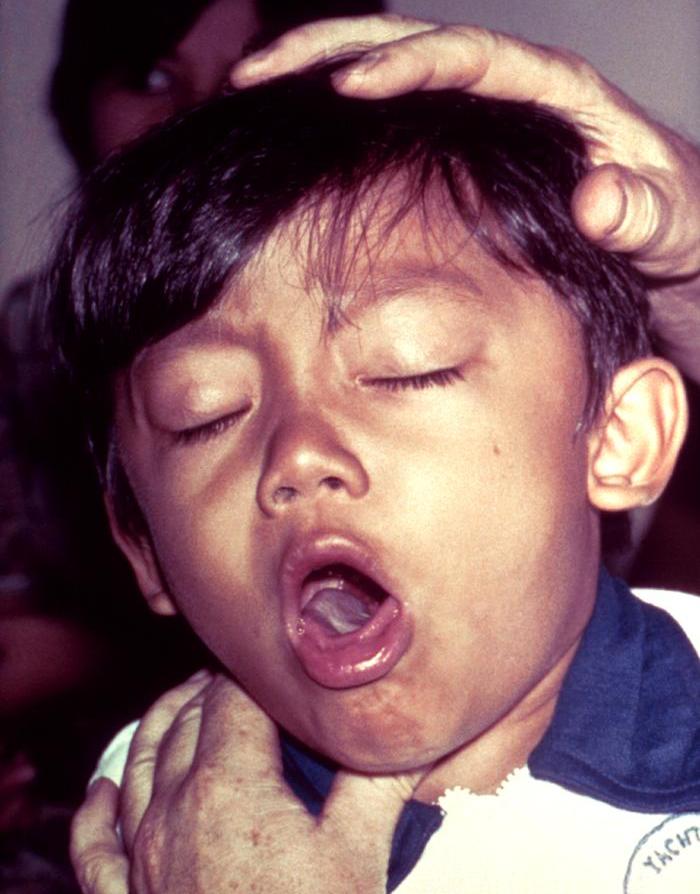Whooping Cough (Pertussis): Symptoms, Causes, Treatment
What are the symptoms of whooping cough?
Whooping cough, also known as pertussis, is a highly contagious respiratory infection caused by the bacterium Bordetella pertussis. It can cause severe coughing spells, which can make it hard to breathe. Symptoms of whooping cough can vary depending on the stage of the infection but often include:
- Early symptoms: The early symptoms of whooping cough are similar to those of a common cold and may include a runny nose, sneezing, low-grade fever, and a mild cough.
- Paroxysmal stage: After 1-2 weeks, the coughing becomes more severe and can lead to coughing fits, or paroxysms. During these fits, the person may cough uncontrollably and rapidly, making a “whooping” sound as they try to catch their breath. These coughing fits can be so severe that they cause vomiting or exhaustion.
- Posttussive vomiting: After a coughing fit, some people may vomit due to the intensity of the coughing.
- Apnea in infants: Infants with whooping cough may experience brief pauses in breathing, known as apnea, during or after coughing fits.
- Convalescent stage: After several weeks, the coughing fits become less frequent and less severe, but coughing may continue for several more weeks.
It’s important to note that not everyone with whooping cough will experience the characteristic “whoop” sound, especially in older children and adults. Infants may not have a typical cough but may instead have episodes where they stop breathing or turn blue.
Whooping cough can be especially dangerous for infants, young children, and pregnant women. Complications of whooping cough can include pneumonia, ear infections, dehydration, seizures, and in rare cases, death.
If you suspect you or your child has whooping cough, it’s important to see a healthcare provider for evaluation and appropriate treatment. Early diagnosis and treatment can help reduce the severity of symptoms and prevent the spread of the infection to others. Vaccination is the best way to prevent whooping cough.
What are the causes of whooping cough?
Whooping cough, also known as pertussis, is caused by the bacterium Bordetella pertussis. The bacterium is highly contagious and is spread from person to person through respiratory droplets when an infected person coughs or sneezes.
The bacteria attach to the lining of the respiratory tract and release toxins that damage the cilia (tiny hair-like structures) that help clear mucus and debris from the airways. This damage leads to inflammation of the respiratory tract and the characteristic symptoms of whooping cough.
Whooping cough is most contagious in the early stages when symptoms are similar to those of a common cold. However, even after the characteristic cough develops, a person with whooping cough can still spread the infection for several weeks.
Infants and young children are most at risk for whooping cough, as they are more likely to develop severe complications. Vaccination is the most effective way to prevent whooping cough. The pertussis vaccine is typically given as part of the DTaP (diphtheria, tetanus, and pertussis) vaccine series for infants and children, and the Tdap (tetanus, diphtheria, and pertussis) vaccine for adolescents and adults. Booster doses are recommended for adolescents and adults to maintain immunity.
What is the treatment for whooping cough?
The treatment for whooping cough, or pertussis, typically involves antibiotics, supportive care, and preventive measures. The goals of treatment are to reduce the severity and duration of symptoms, prevent complications, and prevent the spread of the infection to others. Treatment options may include:
- Antibiotics: Antibiotics such as azithromycin, clarithromycin, or erythromycin are commonly prescribed to treat whooping cough. These antibiotics can help reduce the severity of symptoms and shorten the duration of the illness if given early in the course of the infection. Antibiotics can also help prevent the spread of the infection to others.
- Supportive care: Supportive care can help manage symptoms and improve comfort. This may include getting plenty of rest, staying hydrated, and using a humidifier to help ease coughing and loosen mucus.
- Preventive measures: People with whooping cough should stay home from school, work, or other activities until they are no longer contagious, which is usually about 5 days after starting antibiotics. Practicing good hygiene, such as washing hands frequently and covering coughs and sneezes, can help prevent the spread of the infection to others.
- Vaccination: Vaccination is the best way to prevent whooping cough. The pertussis vaccine is typically given as part of the DTaP (diphtheria, tetanus, and pertussis) vaccine series for infants and children, and the Tdap (tetanus, diphtheria, and pertussis) vaccine for adolescents and adults. Booster doses are recommended for adolescents and adults to maintain immunity.
It’s important to seek medical attention if you or your child has symptoms of whooping cough, especially if there is difficulty breathing, vomiting after coughing, or if symptoms are severe or persistent. Early diagnosis and treatment can help reduce the severity of symptoms and prevent complications.




